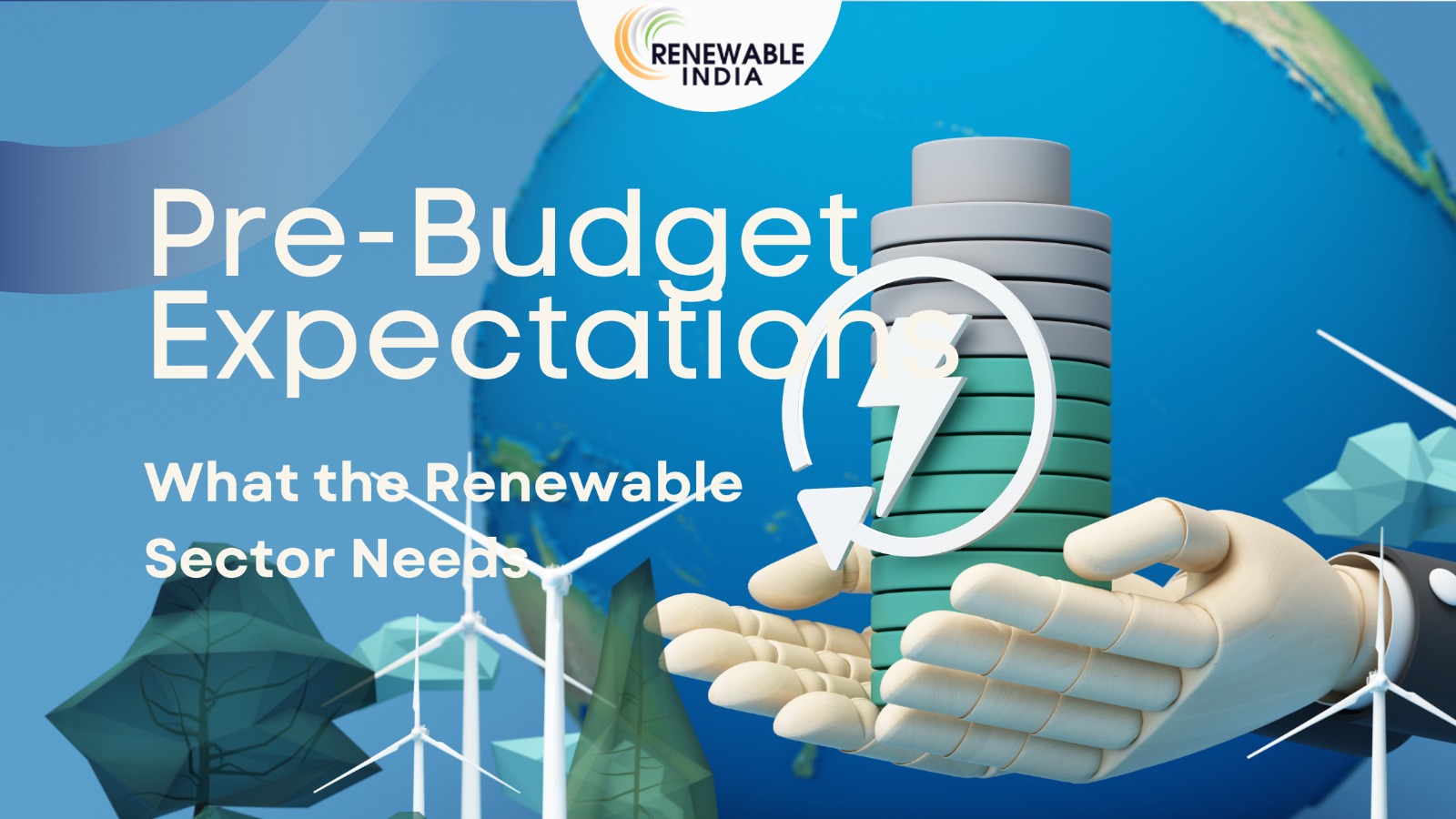
As India stands at the cusp of a transformative energy transition, the upcoming budget holds significant promise for propelling the nation’s new and renewable energy sector. With the government’s ambitious targets and global commitments to reduce greenhouse gas emissions and combat climate change, stakeholders are eagerly anticipating policy measures and financial allocations that will catalyze growth and innovation in this vital sector.
India has made commendable strides in the renewable energy domain, achieving a cumulative installed capacity of approximately 100 GW from renewable sources as of 2023. This includes 50 GW from solar, 40 GW from wind, and the remainder from biomass and small hydro projects. However, to meet the ambitious target of 500 GW of non-fossil fuel capacity by 2030, substantial policy support and financial investments are imperative.
To accelerate the adoption of renewable energy, it is essential to offer enhanced financial incentives and subsidies. Industry experts anticipate increased allocation for the Viability Gap Funding (VGF) scheme, which supports the development of large-scale solar and wind projects. Additionally, tax holidays and reduced import duties on renewable energy equipment can significantly lower project costs and encourage private sector participation.
As per, Ms. Janhavi Joshi, Senior Associate, Spice Route Legal, “The upcoming Budget 2024 is expected to allocate significant allocation and funding to boost India’s new and renewable energy sector. The energy and infrastructure sectors should see continued financial support for solar, wind, and green hydrogen through tax incentives, viability gap funding, production-linked incentives, R&D grants, and hopefully more emphasis on public – private partnerships.
“As the domestic target for installed capacity of 500 GW through non fossil fuel based resources by 2030 is approaching fast, it would be critical to address challenges like high production costs and infrastructure limitations, specifically in the green hydrogen, carbon capture and utilisation, and other newer forms of non-fossil fuel resources and carbon reduction technologies in this budget.
“Expectations include investments in transmission and distribution infrastructure, support for nuclear power, and enhanced provisions for battery energy storage systems. Additionally, support for emerging technologies like sodium-ion batteries and sustained momentum for electric vehicle adoption is anticipated.”
The integration of renewable energy into the national grid remains a critical challenge. Investments in grid modernization, including the development of smart grids and energy storage solutions, are expected to be a focal point in the upcoming budget. Strengthening the transmission infrastructure will facilitate the seamless evacuation of power from renewable energy-rich states to energy-deficient regions, ensuring reliability and stability in supply.
Innovation is the cornerstone of a sustainable energy future. Increased budgetary allocations for R&D in advanced renewable technologies, such as floating solar panels, offshore wind farms, and next-generation biofuels, will drive efficiency improvements and cost reductions. Public-private partnerships (PPP) in R&D can also foster a collaborative ecosystem, accelerating the commercialization of cutting-edge technologies.
According to Mr. Subburathinam P, Chief Strategy Officer, TeamLease Services Limited, “The renewable energy industry expects the new government to amplify the Skill Council for Green Jobs’ efforts, which trained 100,000 people in FY22. Building on the National Manufacturing Policy and PLI scheme, the industry seeks enhanced skilling initiatives to support the 47% workforce increase in the solar and wind sectors. The Union Budget 2023’s focus on upskilling and 5G applications provides a strong foundation. The industry desires more aggressive investment in R&D, infrastructure for emerging technologies, and streamlined policies to attract global talent.”
Decentralized renewable energy systems, such as rooftop solar installations and microgrids, play a crucial role in enhancing energy access in remote and rural areas. Expecting a substantial boost in subsidies and incentives for decentralized systems, the sector aims to empower communities and reduce the dependence on centralized fossil-fuel-based power plants.
The synergy between renewable energy and electric mobility is pivotal for reducing urban air pollution and curbing carbon emissions. Anticipations are high for incentives to bolster the electric vehicle (EV) ecosystem, including subsidies for EV manufacturing, charging infrastructure development, and battery technology advancements. Such measures will create a sustainable market for EVs, driven by clean energy sources.
A budget that prioritizes the renewable energy sector will have multifaceted benefits. Economically, it will attract substantial foreign direct investment (FDI), create green jobs, and foster a robust domestic manufacturing industry. Environmentally, increased renewable energy adoption will mitigate carbon emissions, improve air quality, and contribute to India’s commitments under the Paris Agreement.
The upcoming budget presents a pivotal opportunity for India to reaffirm its commitment to a sustainable energy future. By addressing the sector’s critical needs through strategic financial allocations and policy measures, the government can ensure that the renewable energy sector remains a cornerstone of India’s economic and environmental resilience. Stakeholders across the spectrum are hopeful that the budget will pave the way for a greener, more prosperous India.
Union Budget 2024-25 and Its Environmental Vision: A Roadmap of Climate Action
Leave a Reply